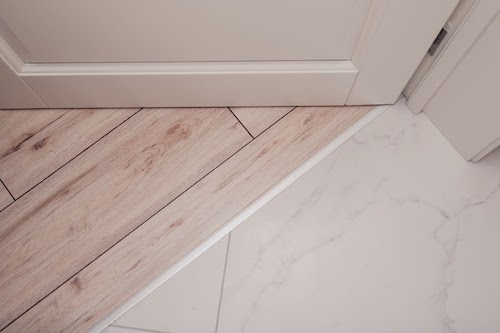Everything You Need To Know About Flooring Profiles
10/10/2023
When it comes to flooring installations, attention to detail is key. Flooring profiles play a vital role in providing a seamless and professional finish to your floors. These profiles not only enhance the aesthetics of your space but also offer functional benefits, such as protecting the edges of your flooring and facilitating smooth flooring transitions, including carpet to tile, ramps, dividers, cover strips and LVT Flooring profiles. In this article, we will explore everything you need to know about flooring profiles, including their types, materials, and installation methods.
What are Flooring Profiles?
Flooring profiles are narrow strips of material designed to cover the edges of various types of flooring. They create a smooth transition between different floor surfaces and provide a clean and finished look. Flooring profiles are commonly used in areas where different flooring materials meet, such as doorways, thresholds, and junctions between different rooms.
Types of Flooring Profiles:
- Floor Transition Strips: These profiles are used to bridge the gap between two different floor coverings, such as tile and carpet, tile and hardwood, or tile and vinyl. They ensure a smooth transition and prevent tripping hazards.
- Edge Profiles: Edge profiles, also known as edging trims, are installed along the edges of the floor to protect the flooring material from chipping or damage. They are commonly used for tiles, laminate flooring, or wood flooring.
- Stair Nosing: Stair nosing profiles are specifically designed for use on staircases. They can provide a secure and non-slip edge to each step, reducing the risk of accidents and enhancing safety. You can get Tile In stair nosing or Retro Fit tile nosing. Tile In Nosing is used when you are installing new tiles and is fitted at the point of tile installation whereas Retro Fit Nosing is used when you have existing tiles or a finished surface.
- Skirting Boards: Skirting boards, or baseboards, are profiles that cover the joint between the floor and the wall. They protect the wall from damage, hide any uneven edges, and provide a finished appearance.
Materials Used:
Flooring profiles are available in various materials to suit different flooring types and aesthetic preferences. Common materials include:
- Aluminum: Aluminum profiles are lightweight, durable, and corrosion-resistant. They are commonly used for both residential and commercial applications.
- Stainless Steel: Stainless steel profiles offer high strength and durability. They are often used in high-traffic areas like commercial buildings or public spaces.
- PVC: PVC profiles are cost-effective and versatile. They are suitable for use with a wide range of flooring materials and are available in various colours and finishes.
- Wood: Wooden profiles provide a natural and elegant finish. They are commonly used with hardwood or laminate flooring to match the overall decor.
Installation Methods:
The installation of flooring profiles depends on the type and material used. Here are some common installation methods:
- Adhesive Installation: Profiles with adhesive backing can be directly stuck to the floor surface, providing a quick and easy installation method.
- Screw Fixing: Some profiles come with pre-drilled holes for screw fixing. They are attached to the floor using screws, ensuring a secure and permanent installation.
- Floating Installation: Certain profiles are designed for floating floors, such as laminate or engineered wood. They are installed without the need for screws or adhesives, allowing for expansion and contraction of the flooring material.
Flooring profiles are essential for achieving a professional finish in any flooring project. They not only enhance the appearance of your floors but also provide functional benefits, such as protection and smooth transitions. By choosing the right type of profile and material, you can ensure that your flooring installation is both aesthetic and durable.
Explore Premium Tile Trim for a wide range of high-quality flooring profiles to suit your specific needs.

